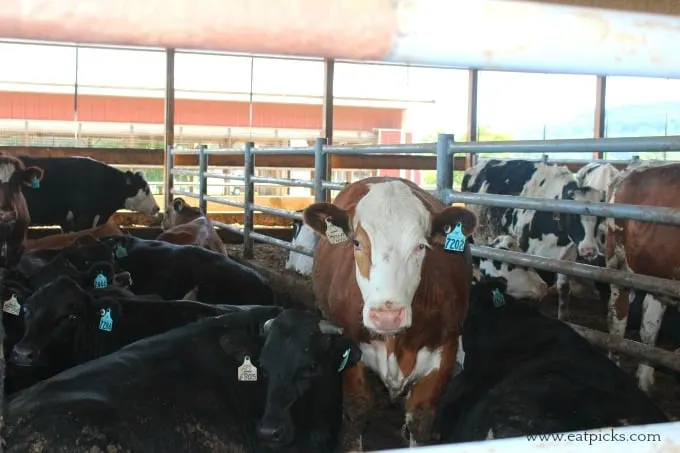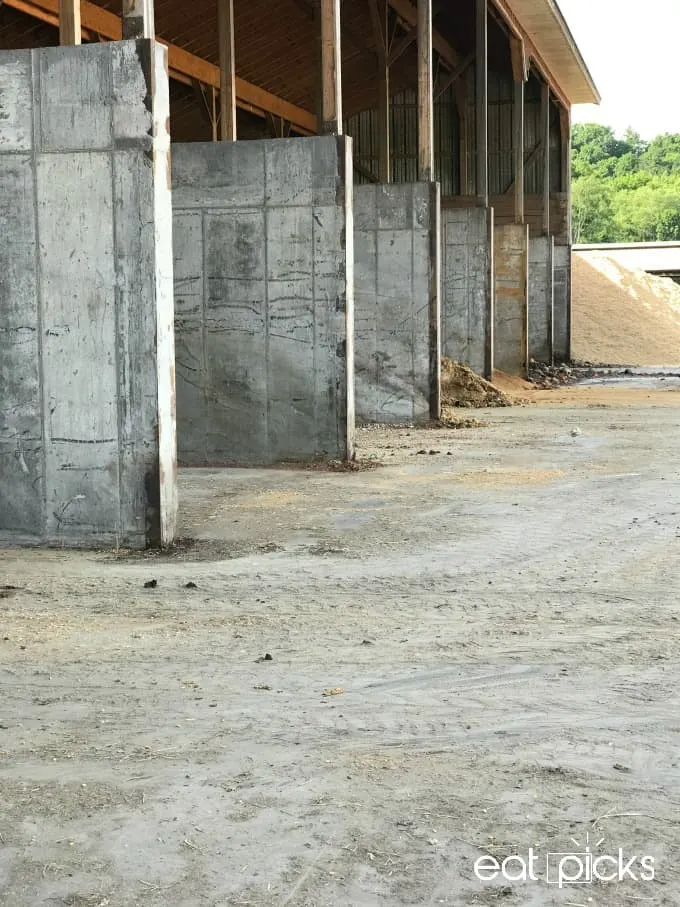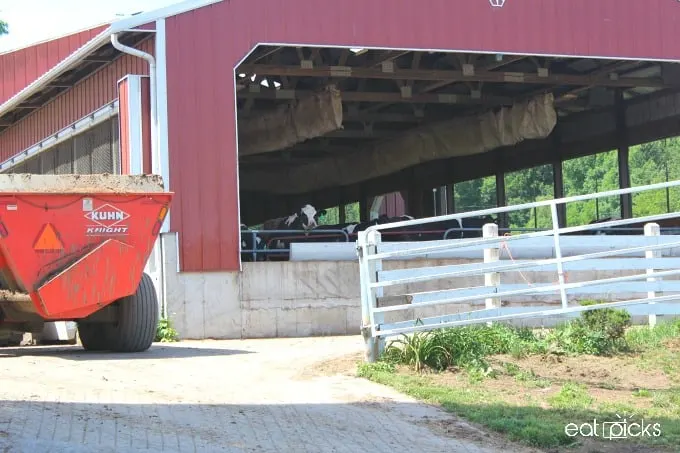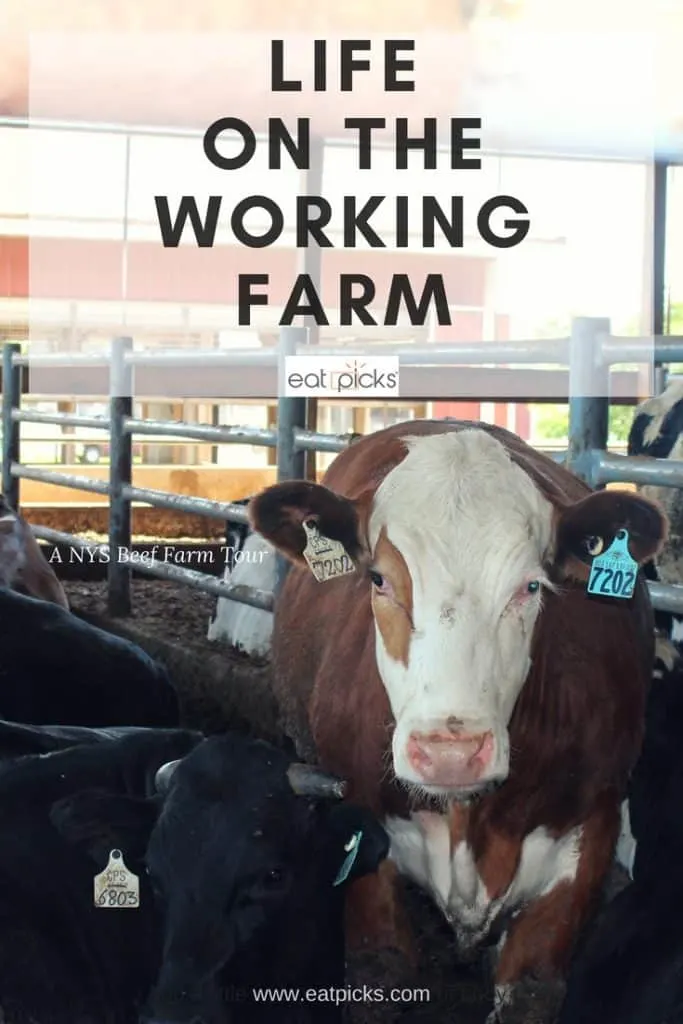New York Beef is quietly becoming a sustainable and high tech farming business. Join us as we visit this first generation cattle farm as we learn more about the daily life on a working farm.

This is a continuation of our Part one series post on New York Beef farming. We were invited to visit the MMT, Inc. family farm in Fonda, NY by NYS Beef council. All opinions are my own. This post may also contain affiliate links. If you purchase through these links, a small commission is earned to support this website.
Sustainable and High Tech Farming
For being a new farm, Marc and Nicole Tommell have found a way to keep their farm current with sustainable and high tech farming methodology. As we pointed out in our previous post, they are using up to date systems to process new livestock which keeps their herd calm and safe as shared by Temple Grandin. {affiliate link} The Tommell's have also turned to the virtual world for assistance with feed nutrition and consistency.

Winning Recipe for Nutrition
Marc & Nicole wanted to ensure their livestock had the best diet possible, so they hired a nutritionist from Nebraska to create a custom automated feed recipe for each stage of finishing. It is monitored daily by both the Tommell’s and their nutritionist and adjusted based on how the feed is consumed. It's actually amazing that through a computer program, they can set the time of feeding based on how long and how much the steer are eating and can make changes to the ingredients too.
Fun Fact: Marc has learned the only thing that won’t get eaten, no matter what? Limes.
“For whatever reason, they don’t like limes, at all! We constantly find them left over!” he shared.

High tech farming doesn't stop at automated feeding; it also includes availability for a constant flow of fresh clean water. On our walk through the barns, Marc noticed one of the watering vessels very low and said “Oh, this group is a bunch of pranksters. They always pull the plug out and hide it!” After a bit of investigating, the plug was found on the other side of the pen and put back in place.
The farm also works with other small businesses for feed and bedding; the local supermarket provides leftover organic produce which gets added to the feed recipe and the bedding is composed of recycled wooden pallets from another local company.

Before I left for this trip, I asked if you, the reader had any questions you would like to ask. Here are a few and the responses:
Q: Why do you keep animals in the barn instead of outside?
A: Cows, no matter the breed are herd animals. They tend to always huddle and stick close together. They are not forced to stay in either environment but are free to choose; so, on hot days, they prefer the cover of the barn to take refuge from the hot sun and enjoy the cool breeze that blows through the barn. On winter days, they like to be outside.
Q: At what age is a steer processed for beef?
A: It depends. The average age is between 18-24 months and can be around 850 pounds!
Q: What is the biggest misconception about beef farming?
A: That we don’t care for or are unkind to our animals. We care for and are grateful for each and every animal that comes through our farm. We take great pride in the health and well-being of our herd. Don’t let a few rotten apples spoil the bunch.
*Note* This answer is a resounding response from any farmer I have ever asked this question.
Farming is not for the lighthearted. It makes for long days filled with hard work; it forces the true character of a person to shine through. Most still view farmers to be simple and quiet, but I found the Tommell’s to be just the opposite. Even though they are a first generation beef farm, they have embraced technology and sustainability to help keep their business modern, viable and rewarding. They are kind, funny, and welcoming and I was honored to spend the day with them and join their family for a delicious meal, filled with laughs, and conversation.

This is the second post in a two-part series. You can read our first installment here.

